Zone
Crash of a Boeing 737-524 in Guadalajara
Date & Time:
Sep 16, 1998 at 2253 LT
Registration:
N20643
Survivors:
Yes
Schedule:
Houston - Guadalajara
MSN:
28904
YOM:
1997
Flight number:
CO475
Crew on board:
6
Crew fatalities:
Pax on board:
102
Pax fatalities:
Other fatalities:
Total fatalities:
0
Circumstances:
On September 16, 1998, at 2253 central daylight time, a Boeing 737-524 transport airplane, N20643, operating as Continental Airlines flight 475, was substantially damaged following a loss of control during the landing roll at the Don Miguel Hidalgo International Airport near Guadalajara, Mexico. The 2 airline transport rated pilots, the 4 flight attendants, and the 102 passengers were not injured. The airplane was owned and operated by Continental Airlines of Houston, Texas, under Title 14 CFR Part 121. Night visual meteorological conditions prevailed for the scheduled international passenger-cargo flight for which an IFR flight plan was filed. The flight was dispatched from the George Bush International Airport near Houston, Texas, at 2056, for the two hour flight to Guadalajara, State of Jalisco, Mexico. The flight's scheduled arrival time was 2254. After executing a missed approach on their first ILS approach to runway 28, the flight was vectored for a second approach to runway 28. The second approach was reported by both pilots to be uneventful; however, after touchdown, the aircraft drifted to the left side of the runway. The left main landing gear exited the hard surface of the runway approximately 2,700 feet from the landing threshold and eventually all 3 landing gears exited the 197 foot wide asphalt runway. The first officer, who was flying the airplane, stated that he never felt any anti-skid cycling during the landing roll and did not feel any "radical braking" which was expected with the auto-brake in the number 3 setting. The airplane's nose landing gear collapsed resulting in structural damage to the avionics bay, the forward baggage compartment, the engine cowlings and pylons. Both engines incurred FOD. A total of 15 runway lights on the southern edge of runway 28 were found either sheared or knocked down. The tower operator reported that intermittent heavy rain showers accompanied with downdrafts and strong winds associated with a thunderstorm northeast of the airport prevailed throughout the area at the time of the accident. The two transport category airplanes that landed prior to Continental flight 475 reported windshear on final approach. The winds issued to Continental 475 by the tower while on short final were from 360 degrees at 20 knots, gusting to 40 knots. Prior to the arrival of Continental flight 475, an Aeromexico MD-82, drifted to the left side of the runway to the point where the left main gear exited the hard surface of the runway. The pilot of that flight stated that he used differential power to regain control and bring the aircraft back on the runway. The flight taxied to the gate without further incident.
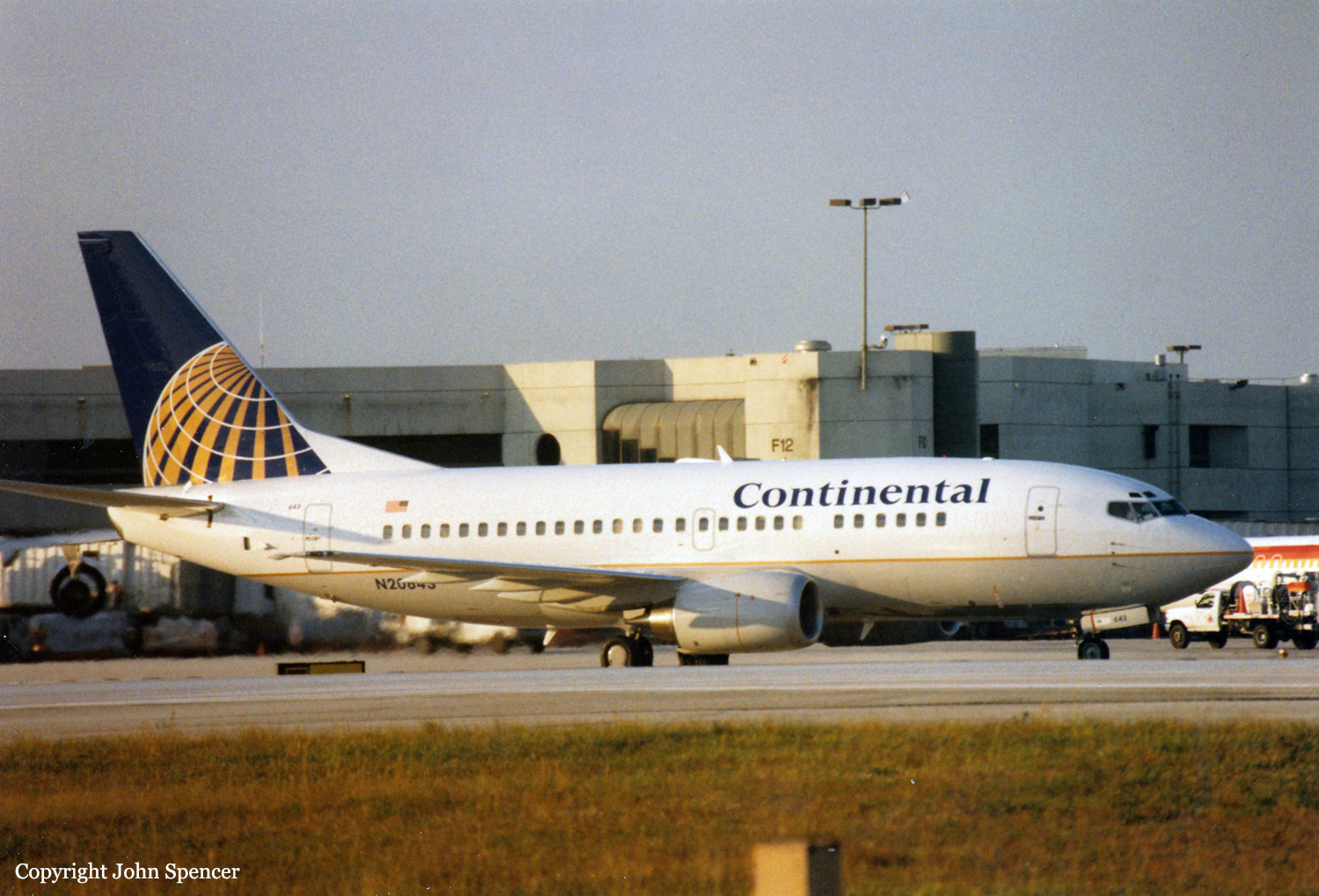

Crash of a Learjet 25B in Houston: 2 killed
Date & Time:
Jan 13, 1998 at 0810 LT
Registration:
N627WS
Survivors:
No
Schedule:
Houston - Fargo
MSN:
25-170
YOM:
1974
Crew on board:
2
Crew fatalities:
Pax on board:
0
Pax fatalities:
Other fatalities:
Total fatalities:
2
Captain / Total hours on type:
2512.00
Aircraft flight hours:
8943
Circumstances:
The flight crew was positioning the airplane in preparation for a revenue flight when it crashed 2 nautical miles (nm) short of the runway during a second instrument landing system approach in instrument meteorological conditions. Except for the final 48 seconds of the 25- minute flight, the captain was the flying pilot, and the first officer was the nonflying pilot. When the airplane was about 0.5 nm inside the outer marker on the first approach, the compass warning flag on the captain's course deviation indicator appeared, indicating that the heading display was unreliable. The airplane deviated from the localizer centerline to the left but continued to descend. After about 1 minute, during which time the airplane's track continued to diverge from the localizer centerline, the flight crew executed a missed approach. The flight crew then unsuccessfully attempted to clear the compass flag by resetting circuit breakers. The captain directed the first officer to request a second approach. Contrary to company crew coordination procedures, the flight crew did not conduct an approach briefing or make altitude callouts for either approach. Although accurate heading information was available to the captain on his radio magnetic indicator, he experienced difficulty tracking the localizer course as the airplane proceeded past the outer marker on the second approach. The captain transferred control to the first officer when the airplane was 1.9 nm inside the outer marker. The airplane then began to deviate below the glideslope. The descent continued through the published decision height of 200 feet above ground level, and the airplane struck 80-foot-tall trees. Post accident testing revealed that the first officer's instruments were displaying a false full fly-down glideslope indication because of a failed amplifier in the navigation receiver. The glideslope deficiency was discovered 2 months before the accident by another flight crew. An FAA repair station attempted to resolve the problem and misdiagnosed it as "sticking" needles in the cockpit instruments. The operator was immediately advised of the problem. The operator's minimum equipment list for the airplane required that the problem be repaired within 10 days, but the operator improperly deferred maintenance on it for 60 days and allowed the unairworthy airplane to be flown by the accident flight crew. The airplane was not equipped with, nor was it required to be equipped with, a ground proximity warning system, which would have sounded 40 seconds before impact.
Probable cause:
The flight crew's continued descent of the airplane below the glideslope and through the published decision height without visual contact with the runway environment. Also, when the captain encountered difficulty tracking the localizer course, his improper decision to continue the approach by transferring control to the first officer instead of executing a missed approach contributed to the cause.
In addition, the following were factors to the accident:
(1) American Corporate Aviation's failure to provide an airworthy airplane to the flight crew following maintenance, resulting in a false glideslope indication to the first officer;
(2) the flight crew's failure to follow company crew coordination procedures, which called for approach briefings and altitude callouts; and
(3) the lack of an FAA requirement for a ground proximity warning system on the airplane.
In addition, the following were factors to the accident:
(1) American Corporate Aviation's failure to provide an airworthy airplane to the flight crew following maintenance, resulting in a false glideslope indication to the first officer;
(2) the flight crew's failure to follow company crew coordination procedures, which called for approach briefings and altitude callouts; and
(3) the lack of an FAA requirement for a ground proximity warning system on the airplane.
Final Report:
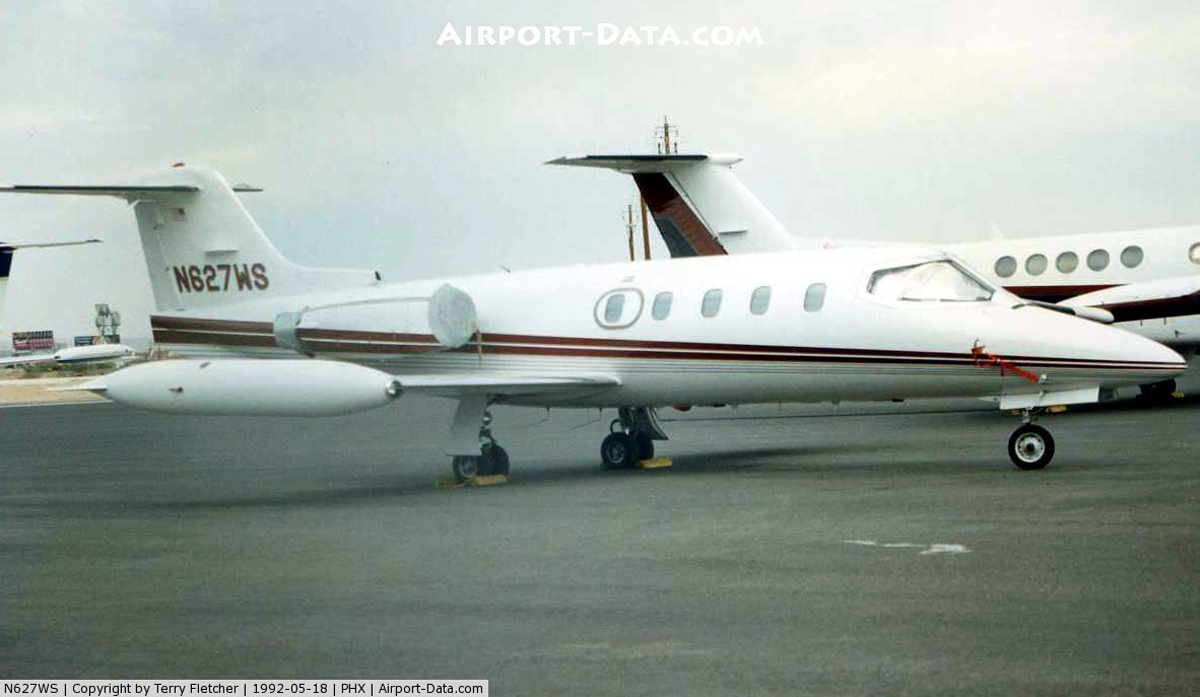
Crash of a Douglas DC-9-32 in Houston
Date & Time:
Feb 19, 1996 at 0904 LT
Registration:
N10556
Survivors:
Yes
Schedule:
Washington DC - Houston
MSN:
47423
YOM:
1970
Flight number:
CO1943
Crew on board:
5
Crew fatalities:
Pax on board:
82
Pax fatalities:
Other fatalities:
Total fatalities:
0
Captain / Total hours on type:
5000.00
Copilot / Total hours on type:
575
Aircraft flight hours:
63132
Aircraft flight cycles:
58913
Circumstances:
The airplane landed wheels up and slid 6,850 feet before coming to rest in grass about 140 feet left of the runway centerline. The cabin began to fill with smoke, and the airplane was evacuated. Investigation showed that because the captain had omitted the 'Hydraulics' item on the in-range checklist and the first officer failed to detect the the error, hydraulic pressure was not available to lower the landing gear and deploy the flaps. Both the captain and the first officer recognized that the flaps had not extended after the flaps were selected to 15°. The pilots then failed to perform the landing checklist and to detect the numerous cues alerting them to the status of the landing gear because of their focus on coping with the flap extension problem and the high level of workload as a result of the rapid sequence of events in the final minute of flight. The first officer attempted to communicate his concern about the excessive speed of the approach to the captain. There were deficiencies in Continental Airlines' (COA) oversight of its pilots and the principal operations inspector's oversight of COA. COA was aware of inconsistencies in flightcrew adherence to standard operating procedures within the airline; however, corrective actions taken before the accident had not resolved this problem.
Probable cause:
The captain's decision to continue the approach contrary to Continental Airlines (COA) standard operating procedures that mandate a go-around when an approach is unstabilized below 500 feet or a ground proximity warning system alert continues below 200 feet above field elevation. The following factors contributed to the accident:
(1) the flightcrew's failure to properly complete the in-range checklist, which resulted in a lack of hydraulic pressure to lower the landing gear and deploy the flaps;
(2) the flightcrew's failure to perform the landing checklist and confirm that the landing gear was extended;
(3) the inadequate remedial actions by COA to ensure adherence to standard operating procedures; and
(4) the Federal Aviation Administration's inadequate oversight of COA to ensure adherence to standard operating procedures.
(1) the flightcrew's failure to properly complete the in-range checklist, which resulted in a lack of hydraulic pressure to lower the landing gear and deploy the flaps;
(2) the flightcrew's failure to perform the landing checklist and confirm that the landing gear was extended;
(3) the inadequate remedial actions by COA to ensure adherence to standard operating procedures; and
(4) the Federal Aviation Administration's inadequate oversight of COA to ensure adherence to standard operating procedures.
Final Report:
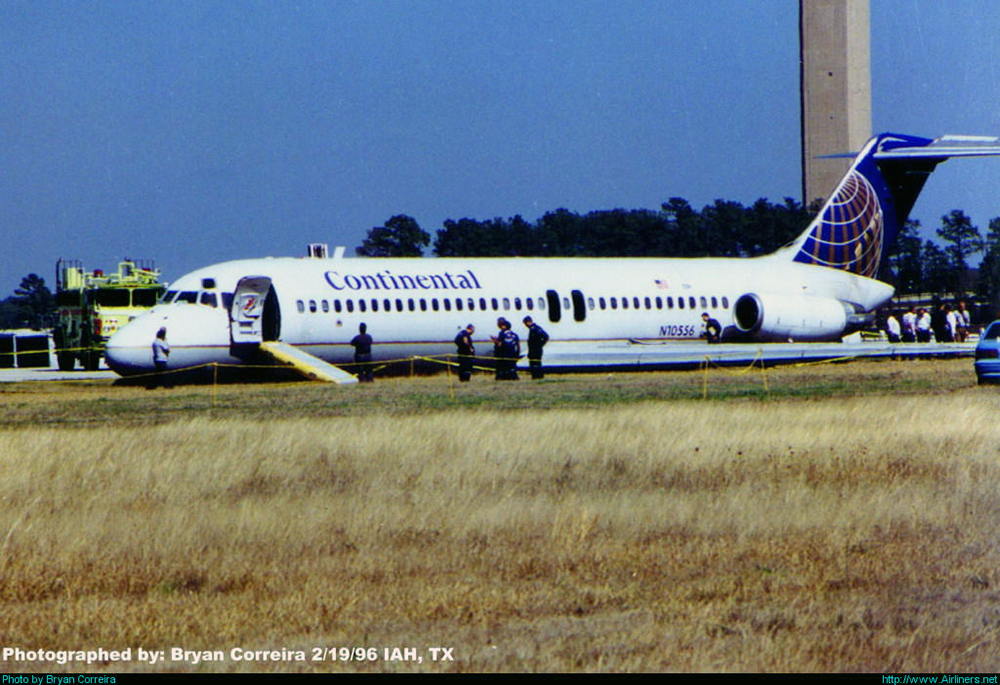
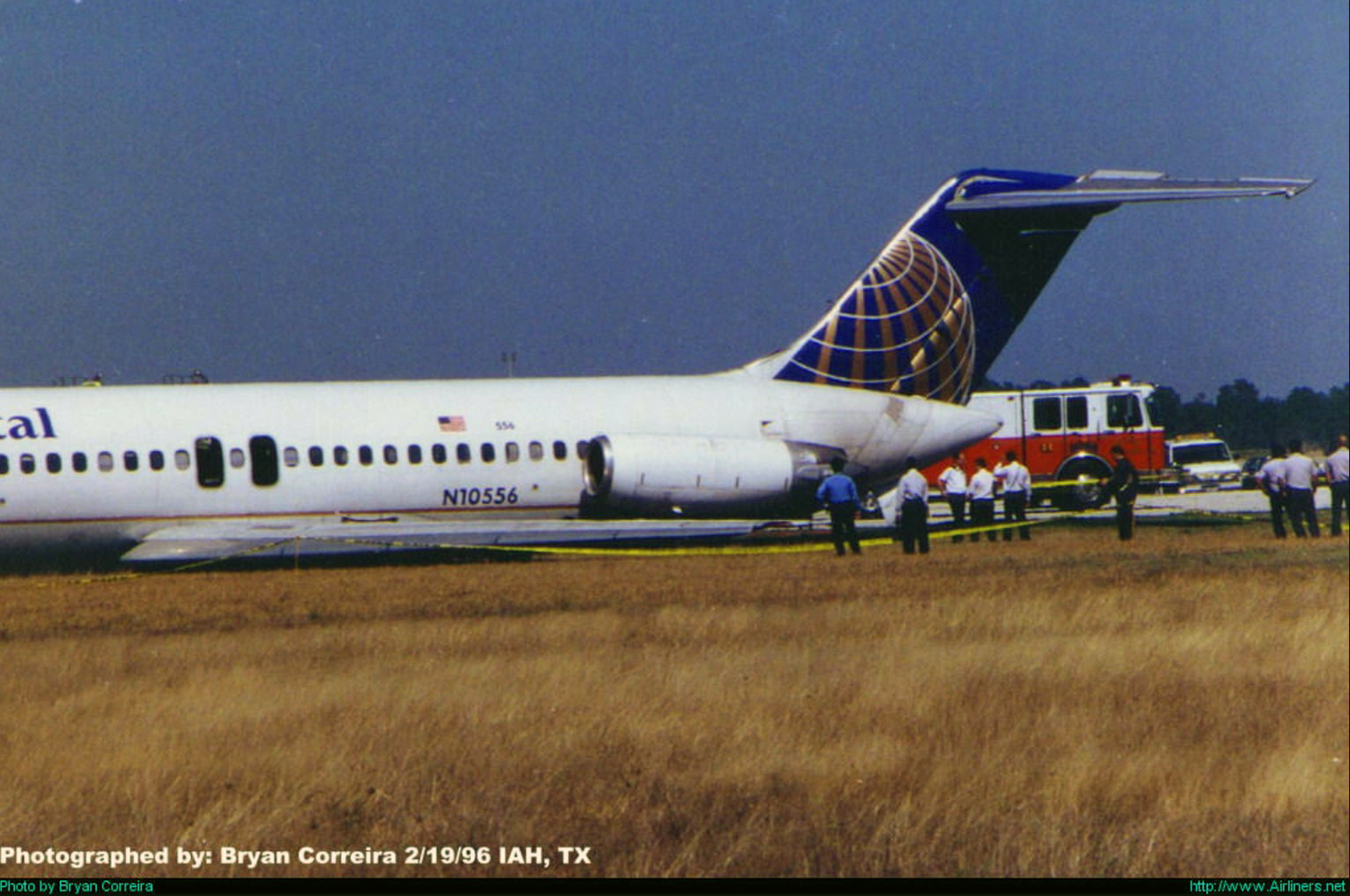
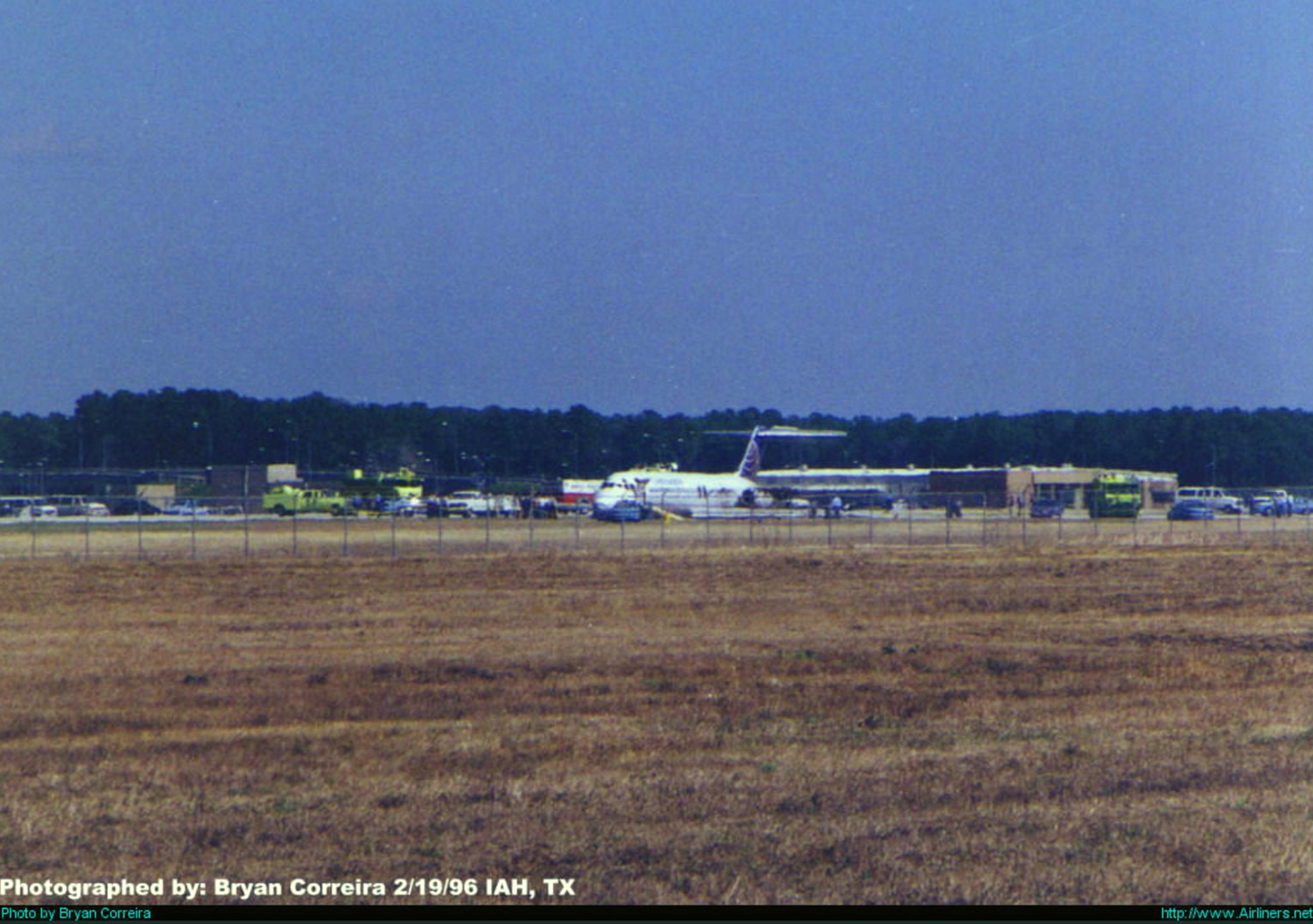
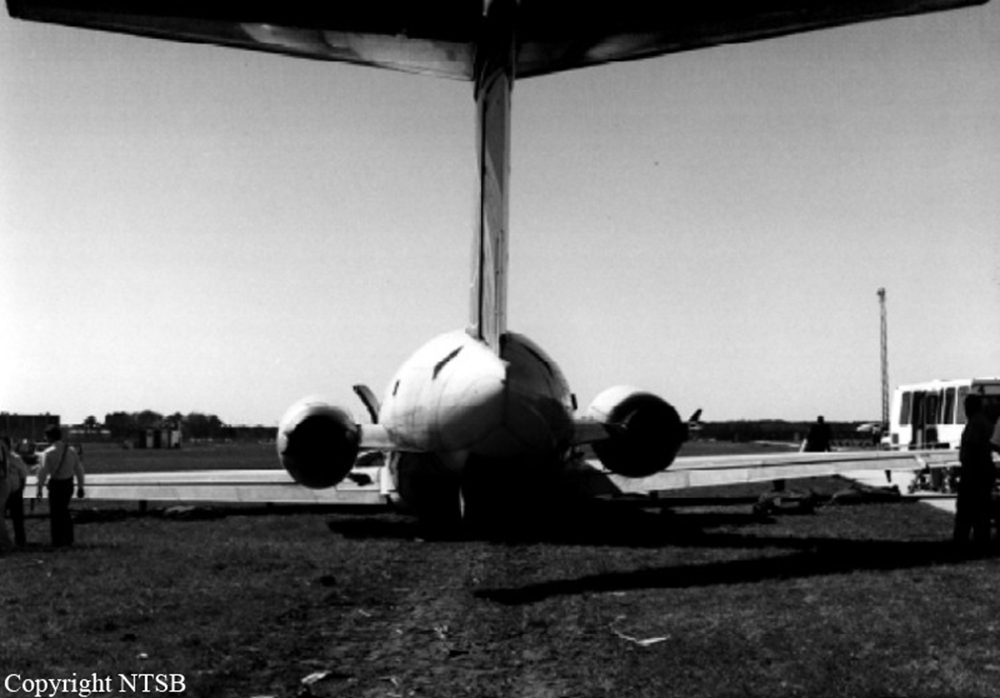
Ground accident of a Boeing 737-2C0 in Houston
Date & Time:
Nov 26, 1994 at 1102 LT
Registration:
N11244
Survivors:
Yes
MSN:
20073
YOM:
1969
Crew on board:
2
Crew fatalities:
Pax on board:
0
Pax fatalities:
Other fatalities:
Total fatalities:
0
Circumstances:
Two technicians took over the airplane from the main Continental maintenance hangar to the gate 41. While approaching the gate, the right wing of the B737 collided with the left wing of a Continental Airlines Boeing 737-300 that was towed from the next gate. While the second B737 was slightly damaged, the right wing of the B737 registered was partially sheared off. There were no casualties but the aircraft was damaged beyond repair.
Probable cause:
Failure of maintenance personnel to follow the taxi checklist resulting in the hydraulic pumps not being turned on.
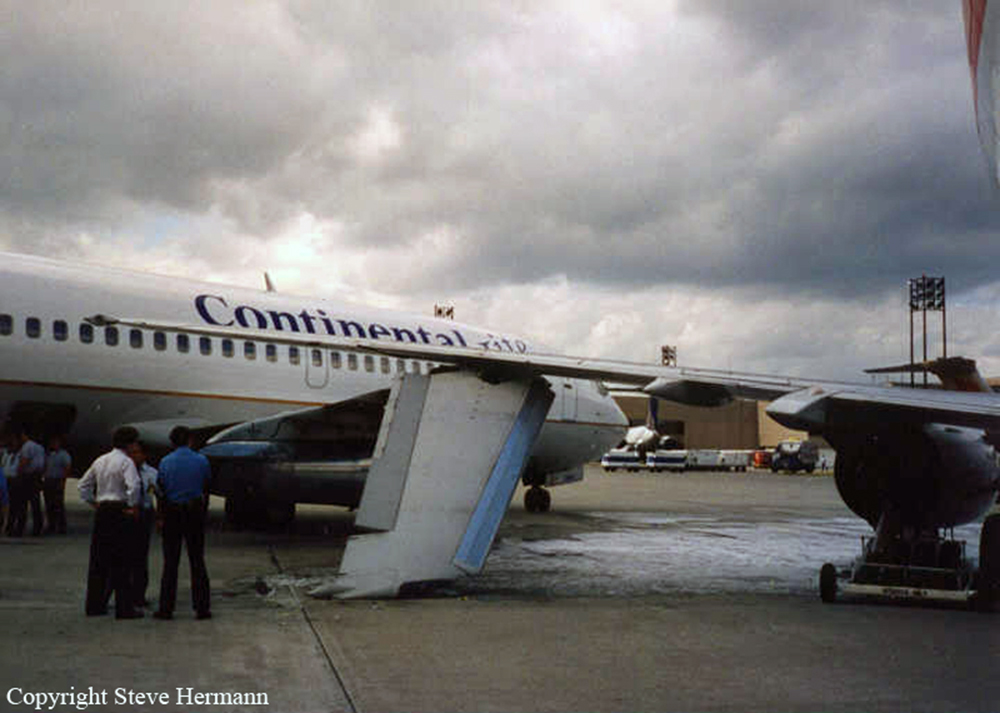
Crash of a Piper PA-46-310P Malibu in the Gulf of Mexico
Date & Time:
May 7, 1994 at 1806 LT
Registration:
N3648E
Survivors:
Yes
Schedule:
Cozumel - Houston
MSN:
46-8408067
YOM:
1984
Crew on board:
1
Crew fatalities:
Pax on board:
3
Pax fatalities:
Other fatalities:
Total fatalities:
0
Circumstances:
The airplane was en route at 14,000 feet msl when the manifold pressure dropped from 30 to 18 inches. Eleven minutes later the oil light came 'on'. The airplane continued under partial power at an airspeed of 90 knots, while descending at 100 to 300 feet per minute (fpm). By 9,500 feet msl the engine oil pressure dropped to zero. The pilot shut down the engine and made a forced landing in the Gulf of Mexico near a ship. The airplane remained afloat for 5 to 7 minutes. During this time, the emergency exit was opened, all occupants donned a life vest, exited, and boarded the life raft, which the pilot had deployed. All were rescued by personnel from the ship. The airplane was not recovered; therefore, the cause of the power loss was not determined.
Probable cause:
A total loss of engine power with the cause undetermined. A factor was the lack of suitable terrain for the forced landing.
Final Report:
Crash of a Learjet 25D on Mt Rowe: 7 killed
Date & Time:
Sep 5, 1993 at 1715 LT
Registration:
N999BH
Survivors:
No
Schedule:
Houston - Santa Fe
MSN:
25-318
YOM:
1980
Crew on board:
2
Crew fatalities:
Pax on board:
5
Pax fatalities:
Other fatalities:
Total fatalities:
7
Captain / Total hours on type:
4000.00
Aircraft flight hours:
4973
Circumstances:
While descending to his destination the pilot in command (pic) canceled his IFR clearance and declined VFR flight following. Witnesses observed the aircraft maneuvering at low altitude in the area where the accident occurred, approximately 25 miles from the destination airport. The aircraft impacted rising terrain at 7,300 feet msl. Toxicological testing revealed that the pic and two passengers had cocaine and alcohol in tissue samples. At an unknown time the pic left the cockpit. Based on cockpit voice recorder analysis, he was called back to the cockpit approximately 11 minutes prior to the accident by the copilot. The copilot had no previous Lear experience. Toxicological test results indicated that the pic 'used cocaine in the very recent past, probably while in-flight' and concluded that he 'was impaired by multiple drug use of cocaine and alcohol.' The investigation did not reveal any structural or system failure or malfunction. All seven occupants were killed.
Probable cause:
Physical impairment of the pilot in command from alcohol and drugs. A factor was the first officer's lack of experience in the Learjet.
Final Report:
Crash of an Embraer EMB-120RT Brasília in Pine Bluff
Date & Time:
Apr 29, 1993 at 1555 LT
Registration:
N24706
Survivors:
Yes
Schedule:
Little Rock - Houston
MSN:
120-093
YOM:
1988
Flight number:
CA2733
Crew on board:
3
Crew fatalities:
Pax on board:
27
Pax fatalities:
Other fatalities:
Total fatalities:
0
Captain / Total hours on type:
2600.00
Copilot / Total hours on type:
700
Aircraft flight hours:
10398
Circumstances:
In climb, captain (pic) increased pitch, when flight attendant (f/a) entered cockpit and suggested faster climb, so she could begin cabin service. Autoflight was set in pitch and heading modes, contrary to company policy. Pic and f/a had non- pertinent conversation for 4.5 min, while 1st officer (f/o) was making log entries. Airplane stalled in IMC at 17,400 feet. Initial recovery was at 6,700 feet after f/o lower gear, then due to improper recovery, 2nd stall occurred and recovery was at 5,500 feet. Left propeller shed 3 blades, left engine cowling separated, left engine was shut down in descent. Level flight could not be maintained and forced landing was made at closed airport. Pic overshot final turn due to controllability problems and landed fast with 1,880 feet of wet runway remaining. Airplane hydroplaned off runway and was further damaged. Crew got limited sleep during 3 day trip, though rest periods available. Freezing level near 11,500 feet, clouds tops to 21,000 feet with potential for icing to 19,000 feet. No pre-accident malfunction was found.
Probable cause:
The captain's failure to maintain professional cockpit discipline, his consequent inattention to flight instruments and ice accretion, and his selection of an improper autoflight vertical mode, all of which led to an aerodynamic stall, loss of control, and a forced landing. Factors contributing to the accident were: poor crew discipline, including flightcrew coordination before the stall and the flightcrew's inappropriate actions to recover from the loss of control. Also contributing to the accident was fatigue induced by the flightcrew's failure to properly manage provided rest periods.
Final Report:
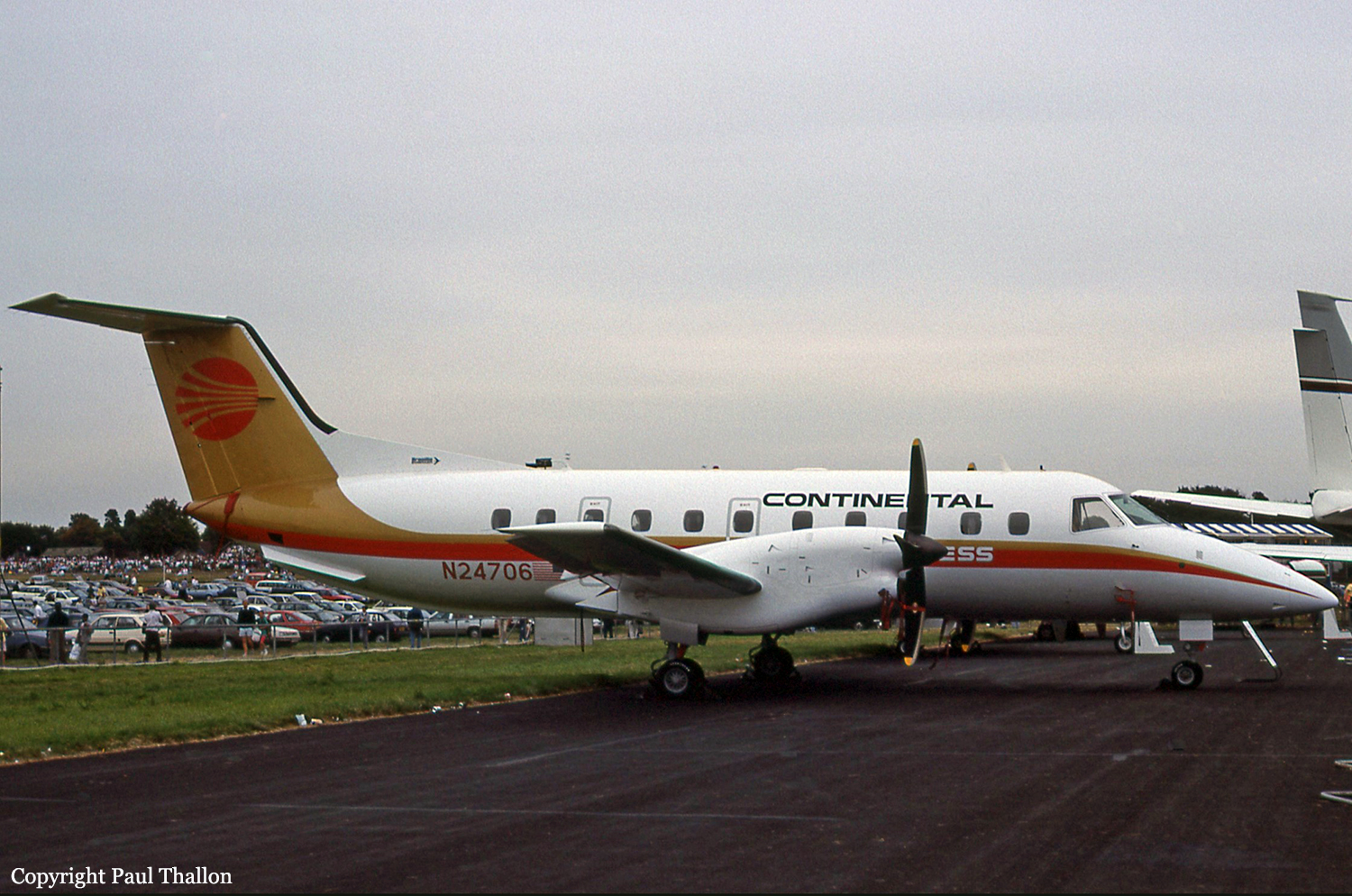
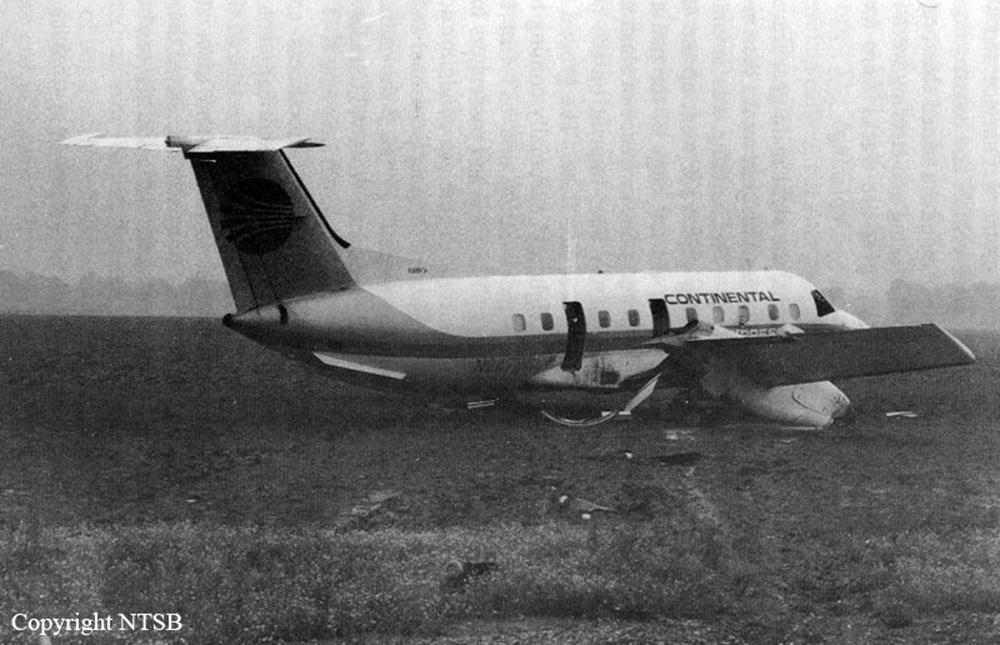
Crash of a Cessna 340A in Kerrville: 2 killed
Date & Time:
Feb 27, 1993 at 1840 LT
Registration:
N88KH
Survivors:
No
Schedule:
Houston - Kerrville
MSN:
340A-1801
YOM:
1984
Crew on board:
1
Crew fatalities:
Pax on board:
1
Pax fatalities:
Other fatalities:
Total fatalities:
2
Captain / Total hours on type:
498.00
Aircraft flight hours:
1100
Circumstances:
The pilot was cleared for an instrument approach to the airport. Once clear of clouds, the pilot was observed circling at low altitude on a closed left downwind for runway 30. Witnesses observed that on the turn from base to final, a very steep angle of bank was established as the engine power was heard being increased. Control was lost and the airplane impacted the ground inverted in a nose low attitude. A post impact fire consumed the airplane. The weather at the airport was reported as 900 overcast with 2 miles visibility in fog and haze with a light mist. Official sunset was one minute prior to the impact. Both occupants were killed.
Probable cause:
Inadvertent stall. Factors were the weather and the light conditions.
Final Report:

